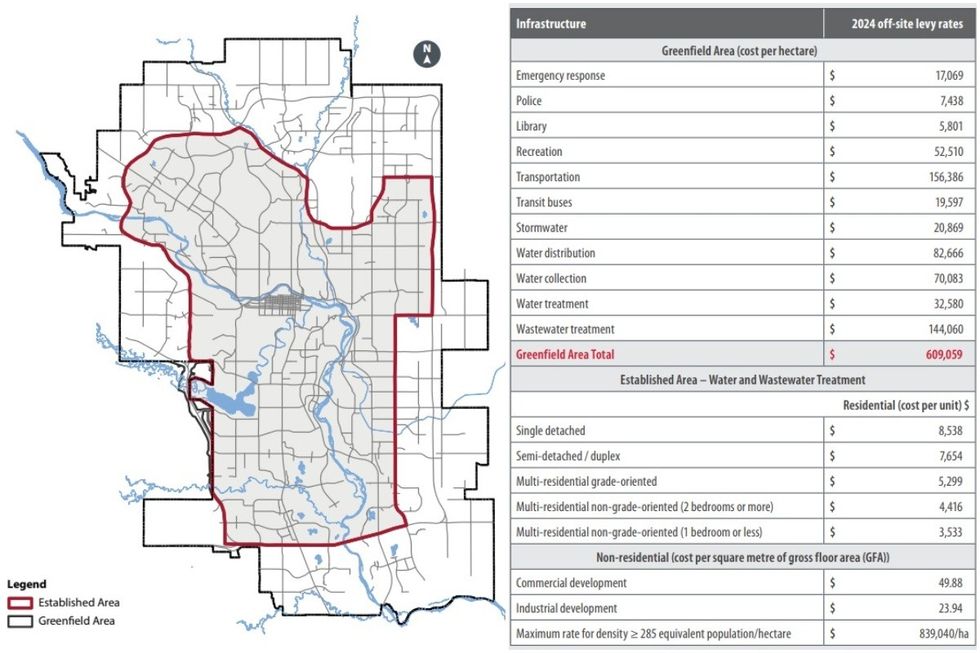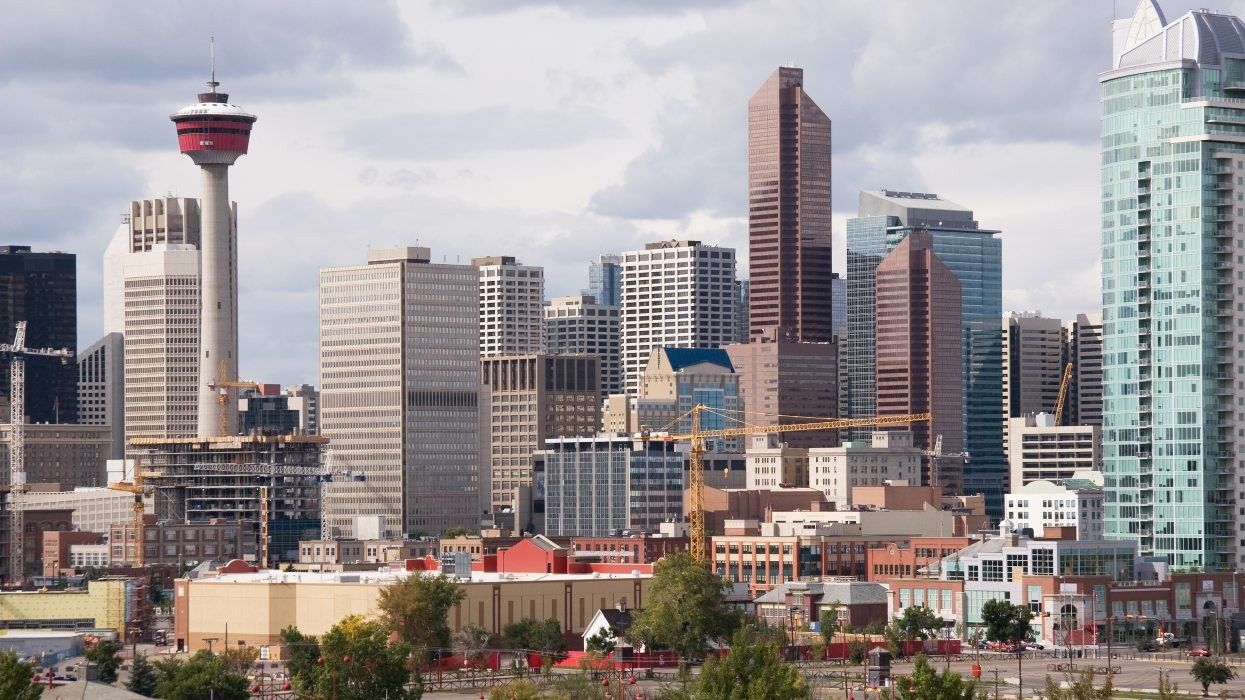Earlier this week, Calgary City Council approved increases to its off-site levy — fees that are charged to developers whenever land is subdivided or developed — as part of an effort to secure more funding to pay for infrastructure to support Calgary's rapid and expansive growth.
Funds collected from the off-site levy go towards what the City calls its "10 Home and Business Essentials": clean and safe drinking water; flush toilets, drain sinks, and bathtubs; storm drainage to remove rain and snow melt; pathways and bikeways; buses; streets; fire and emergency response; police protection; libraries; and recreation.
Similar to other municipal governments around Canada, the fees collected from developers pay for a portion of infrastructure-related costs, while the City pays for the remaining portion with funds collected through various other avenues, such as property taxes. (A complete list of infrastructure projects the levy goes towards can be found here.)
Off-site levy rates differ depending on whether the development site is within a greenfield area (newly developing communities) or established areas (existing communities) and are broken down into components corresponding to the 10 Home and Business Essentials.
In greenfield areas, off-site levies are collected for emergency response, police, library, recreation, transportation, buses, stormwater, water distribution, wastewater collection, and water and wastewater treatment. The levies are charged on a per hectare basis.
In established areas, off-site levies are collected for water and wastewater treatment, and are charged on a per unit basis.
The off-site levy rate that is being increased is the levy for greenfield areas. The rate in 2023 was $540,700 per hectare and was set to be increased to $564,000 via a 4% inflation adjustment. With the now-approved increase, the new rate will be $609,059 — an 8% increase, or 12% increase if including the inflation adjustment.

According to the City, one hectare of land can house an average of about 27 residential units, so the new rate of $609,059 per hectare amounts to a cost of $22,600 per home.
The rate adjustment has been in the works since 2020, when the City began a review of how it charges off-site levies. The City says it consulted the Building Industry and Land Development Association (BILD), the National Association for Industrial and Office Parks (NAIOP), the Calgary Inner City Builders Association (CICBA), and the general public, over the course of more than 100 meetings.
The City also retained commercial real estate data and analytics firm Altus Group to conduct a benchmark study of other municipalities across Canada and their versions of off-site levies — more often referred to as development cost charges.
According to the City, the now-approved cost of about $22,600 per unit puts Calgary on the lower end when it comes to rates. Based on data provided by Altus Group, the cost per unit in Mississauga, Ontario amounts to nearly $130,000 per unit. In the City of Surrey, in British Columbia, the cost is nearly $73,000 per unit, and other cities such as Ottawa, Kelowna, and Montreal all still have higher costs per unit than Calgary — although Calgary's is higher than Edmonton's, where the cost is about $16,000 per unit.
"The approval of the Off-Site Levies Bylaw marks a significant milestone for our city," City of Calgary Director of City and Regional Planning Josh White said. "Levies are the most effective funding mechanism available to ensure that the City can build the essential infrastructure required to support the development of homes and businesses."
"The bylaw features a levy rate calculation that is easier to understand and accurately reflects the cost of the ten essentials needed to unlock the development of new homes and businesses," added Growth Financial Strategies Coordinator Jennifer Black. "As more people choose to call Calgary home, this new bylaw will ensure that growth is paying for its share of growth so that the City can build complete communities where families can thrive."





















